The Structure of the Violin
[Experiment1]Using alternative materials for a bridge
Performing a sound experiment
The bridge is usually made from maple, but this experiment used bridges made with different materials.
Experiment steps
- Prepare the wood, a vinyl chloride sheet, and a thick piece of paper
- Shape them into the form of a bridge
- Stand these bridges on the violin and play it
Results of the experiment
Wood
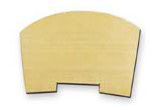
Vinyl chloride sheet
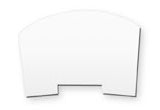
Thick piece of paper
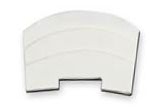
Could not record.
*As this was an experiment, the recorded pitches differed from the correct notes.
The wood used for the bridge was agathis, which is softer than the usual maple bridge. Of the three, the best sound came from the wood, of course. The vinyl was easy to shape, but the sound was not so clear, and the thick paper bent because it was not strong enough to support the tension of the strings, and so was unplayable.
The bridge is rounded on the side that faces the neck, and on the reverse side, it is perpendicular to the body. The left side of the bridge is lower than the right side when looking toward the neck, and it is curved on the bottom so that it fits perfectly to the arch of the top plate, which helps it to transmit sound. With all of these factors involved, it is difficult to build a bridge using anything but wood.
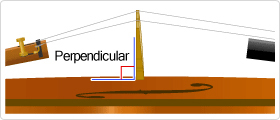
The bridge is rounded on the neck side, but perpendicular on the reverse side
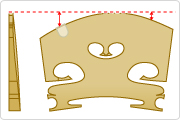
The bridge is higher on the right than the left
Musical Instrument Guide : Violin Contents
Origins
Structure
How to Play
How the Instrument is Made
Choosing an Instrument
Care and Maintenance
Trivia
- The f-hole used to be a C-hole or S-hole
- Why the f-hole?
- Violinists must bow to the horse
- Steel strings or gut strings? That is the question
- Is the chinrest the unsung hero of the violin?
- Most violin varnishes are also medicines
- Violin masterpieces: Solos I
- Violin masterpieces: Solos II
- Violin masterpieces: Solos III
- Violin masterpieces: Concertos I
- Violin masterpieces: Concertos II
- Viola masterpieces: Chamber music
- Viola masterpieces: Concertos
- Cello masterpieces: Concertos I
- Cello masterpieces: Concertos II
- Cello masterpieces: Solos
- Contrabass masterpieces: Concertos
- Contrabass masterpieces: Chamber music
- Orchestral masterpieces featuring the contrabass
- What do you call the part on the bow that you hold?
